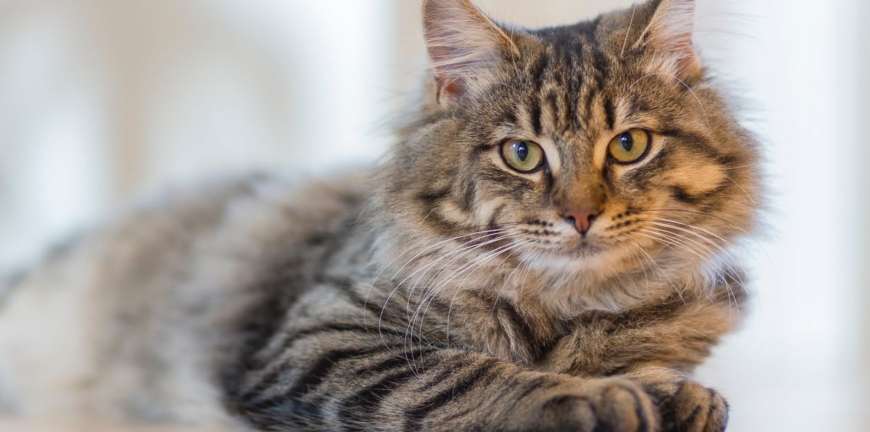February 15, 2024

Dental Care At Pawtown
Did you know that 85% of pets have periodontal disease by the time they are 3 years old? How does this happen?
When our pets eat, saliva, bacteria and food particles cover the teeth. These can develop into plaque. When the plaque is not brushed/cleaned away, it turns into a hard substance called tartar (or calculus). The tartar traps bacteria against the teeth and gums which leads to build up of additional tartar and inflammation of the gums (gingivitis).
What are the consequences of dental disease?
The inflammation affects the ligament/attachment around the teeth which can lead to loosening of the teeth. Bacteria, severe gingivitis and periodontal disease will also affect the bone around the teeth leading to bone loss and infection. Excess bacteria in the mouth can also cause inflammation or infection elsewhere in the body including the liver, kidneys, and heart.
What can be done to help your pets’ oral health?
Daily dental home care starting at a young age can be very beneficial. Starting dental home care before evidence of dental disease is present is best. Dental home care is unlikely to remove tartar build up or eliminate gingivitis that has already occurred, but it can help to prevent further deterioration of oral health. Teeth brushing with a pet enzymatic toothpaste, dental chews and water additives are all steps that can be taken at home. For a list of quality dental pet products visit the Veterinary Oral Health Council website
Dental cleanings by a veterinarian are another step to help your pets oral health. Even with the best home care, it is expected that pets will need their teeth cleaned by a veterinarian. These teeth cleanings are done under general anesthesia. Anesthesia is needed so we can perform full mouth dental radiographs, clean all surfaces of the teeth (including under the gum line of all teeth), examine all teeth, probe around the teeth to evaluate periodontal health, and polish all surfaces of the teeth.
What can you expect of a dental procedure for your pet at Pawtown?
First, we will examine your pet and perform pre-anesthetic blood work. This can be done on a day prior to the dental cleaning so we can get a better idea of the severity of dental disease. Blood work is performed to evaluate the red blood cells and white blood cells as well as organ function. Drugs administered during anesthesia are processed by the liver and kidneys and blood work gives a better idea if these organs are healthy and functioning well prior to anesthesia.
Once your pet is admitted for a dental cleaning, we will place an IV catheter. This gives access to administer anesthetic medications, it allows us to administer fluids throughout the procedure to help maintain blood pressure, and it provides IV access to administer emergency medications if necessary. We also administer an anti-nausea medication to help alleviate nausea your pet may experience after anesthesia. We will then administer pre-medications.
After the premedications, we will place your pet under general anesthesia. This means they will have an endotracheal tube placed & will be on inhaled gas anesthesia. Your pet will be on IV fluids throughout the anesthesia. Their vitals will be monitored including the heart rate, respiratory rate, body temperature, blood pressure, ECG, pulse oximetry, and capnograph.
Full mouth dental radiographs are performed. These xrays are very important since over 50% of the length of your pets teeth are under the gum line and that portion of the teeth can only be evaluated by xray. The radiographs are evaluated for any abnormalities.
Then all surfaces of the teeth are cleaned (this includes the surfaces you can see but also the insides of the teeth & under the gum line). The teeth are examined and the periodontal region around each tooth is probed.
If there are any teeth that need to be extracted, then extractions are performed (once client consent has been obtained). Although we would prefer pets to keep all of their teeth, extractions are often necessary. Once a diseased tooth is removed, it removes the source of pain and infection for your pet. The reasons that tooth extractions may be recommended are broken teeth with root canal/pulp exposure, significant root exposure, loose teeth with bone loss around them, or tooth root abscess (seen on xray). Prior to extractions, a nerve block is performed to provide additional pain management. Many cat and dog teeth have multiple roots, so extractions may require advanced techniques such as teeth sectioning & gingival flaps. Extraction sites are sutured closed with absorbable sutures. If your pet had extractions, then they will be given an additional pain injection prior to recovery.
Teeth are then polished.
After anesthesia, we will call to let you know how the procedure went and set up a time for you to pick up your pet. Your pet will stay at Pawtown for a few hours after anesthesia. This is for us to monitor them during recovery, allow them time to wake up fully from the anesthetic medication, and be ready to walk out the door with you.
When you come to pick up your pet, you will go over discharge instructions with a staff member to discuss any medications, diet recommendations, or special care your pet may need. Once your pet’s mouth has healed, it is a good time to start dental home care to keep their teeth clean.
If you have any questions or concerns regarding a dental procedure for your pet, please don’t hesitate to contact us.